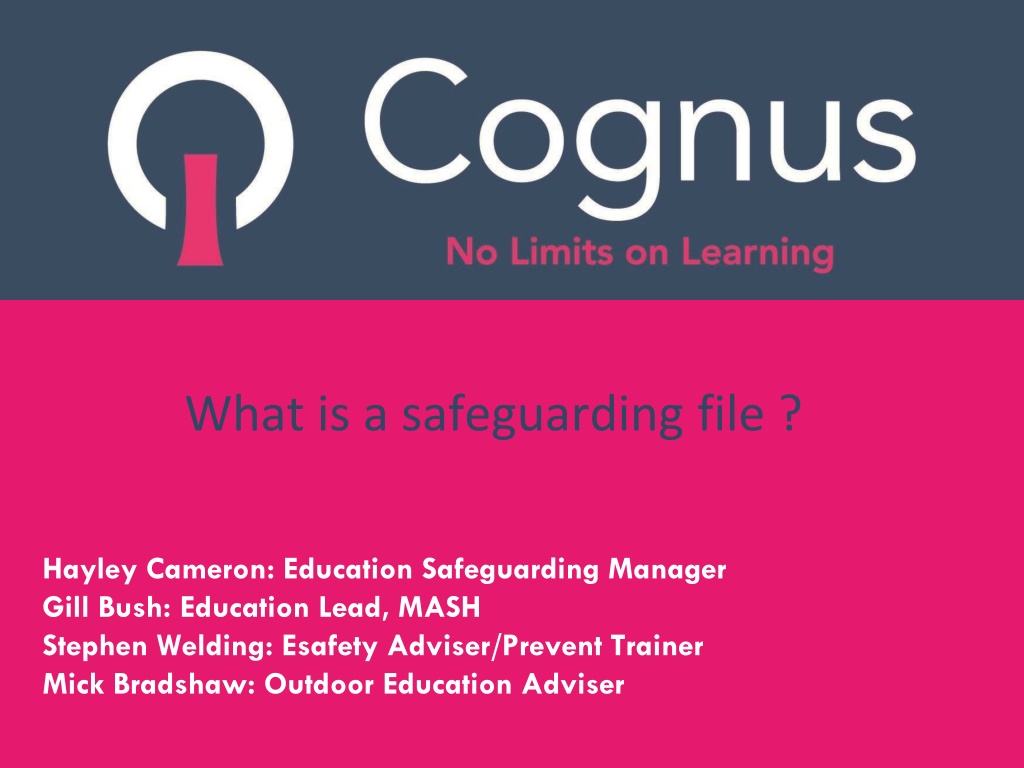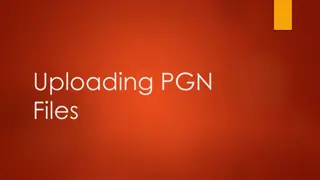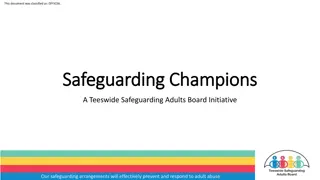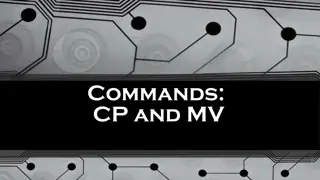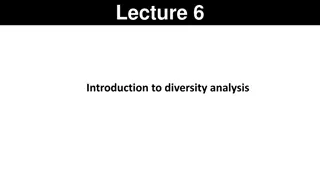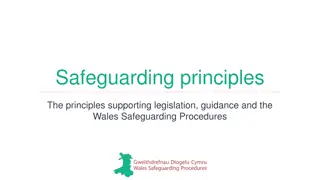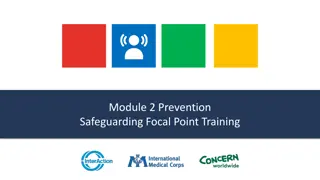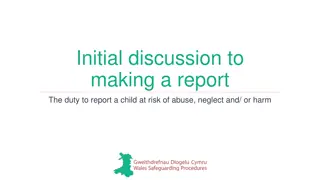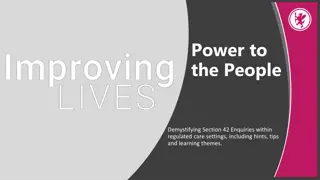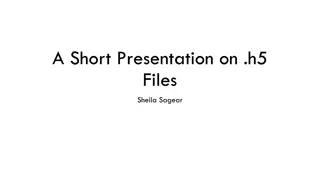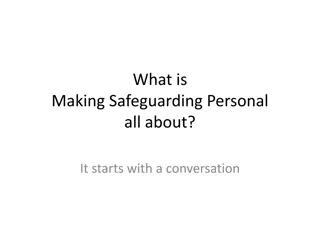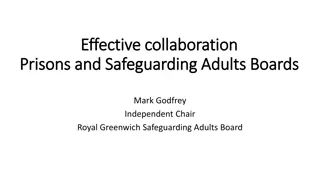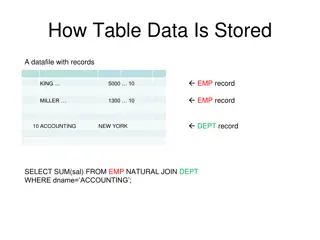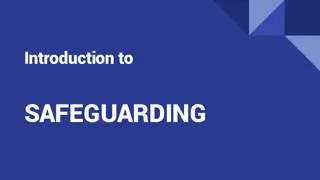Understanding the Importance of Safeguarding Files in Educational Settings
A safeguarding file, also known as a Child Protection File, is a crucial record that captures any concerns of a safeguarding nature within a school setting. This file serves as a centralized repository for sensitive and confidential information, aiding Designated Safeguarding Leads (DSLs) in monitoring, decision-making, and ensuring the overall safeguarding of children. Properly maintaining safeguarding records is essential for effective communication, referral processes, and information sharing among relevant parties.
Uploaded on Sep 19, 2024 | 1 Views
Download Presentation

Please find below an Image/Link to download the presentation.
The content on the website is provided AS IS for your information and personal use only. It may not be sold, licensed, or shared on other websites without obtaining consent from the author. Download presentation by click this link. If you encounter any issues during the download, it is possible that the publisher has removed the file from their server.
E N D
Presentation Transcript
What is a safeguarding file ? Hayley Cameron: Education Safeguarding Manager Gill Bush: Education Lead, MASH Stephen Welding: Esafety Adviser/Prevent Trainer Mick Bradshaw: Outdoor Education Adviser
What is a safeguarding file ? It s a record of anything that anyone in your school may feel could be a concern of a safeguarding nature, no matter how minor this may be. This is sometimes referred to as a Child Protection File.
Why have a safeguarding record Safeguarding information and concerns are sensitive and confidential. Storing all these in one place helps with the security, but also if kept properly, can be used to assist DSLs in the overall safeguarding of the child. A good detailed chronological record can assist with monitoring and decision making on next steps, often taking into account the history can tip concerns into a referral. It is also easier to refer to when attending case conferences, meetings and replying to welfare checks. If a setting has a robust system in place for noting the concern, then the monitoring should follow on quite easily.
Reasons to open a file Remember as a DSL you will have many discussions with many people of a safeguarding nature and not always your staff in your setting. It is important that any information you are given is recorded accurately. An example of this would be a MASH check. Unlike Education settings, social care don t automatically share on to a new local authority the information they hold on that family when they move Borough, especially if its not an open case. Any new school would not be able to call their social care and enquire about the history, so often the safeguarding file will hold this. When a Mash check is completed or an Operation Encompass alert is sent to school, this needs recording in a safeguarding file, and if one does not exist it needs creating. School Nursing and CAMHS often share information relevant for a safeguarding file. This will all then travel with the journey of the child, with each setting adding their concerns and any new information to make a clear chronology for the journey of the child.
Reasons to open a file If something you see or someone tells you something of a safeguarding nature that prompts you to take some action, for example it maybe just having a discussion with a child or parent for clarity or a member of staff , then this needs recording and no better place than the safeguarding file. Creating a file is not a bad thing, you can always show your decision and actions to counter balance a low level concern. Remember that safeguarding is very fluid and dynamic and can both escalate and de-escalate very quickly as circumstances change. A concern raised at your setting of a low level, with very limited action could become very relevant later.
What do we record It is imperative that the record keeping is factual and proportionate with enough detail, so that when someone else is required to read it, either at your setting or another, that it makes sense. It is also important that the concern is balanced with a note of the action taken, no matter how low level this may be. When dealing with a concern and making an entry, there are two questions we should be asking. On its own merit, what action is required on this concern? Taking into account any history, what action is required ? Remember in the vast majority of cases there will always be an action for every concern, but it may just simply be a conversation with a child or parent or colleague or monitoring or signposting.
How do we store the information and what do we do when the child moves. You may have siblings in your setting, and often with complicated cases, they cross over with each child, but remember a file should be created for each child individually, this is important as the children move on and often move to different settings. BUT REMEMBER IF IT S NOT RECORDED, IT DIDN T HAPPEN AND POTENTIALLY CAN BE LOST.
Should schools keep a copy of the Safeguarding file? There is no statutory guidance which offers clarity on this issue. Local practice has developed over time. In Sutton: Early Years Settings send photocopies of the records, and keep the originals until the end of the year of the person s 18th birthday. Primary Schools send photocopies of the records, and keep the originals until the end of the year of the person s 18th birthday. Secondary Schools send photocopies of the records and keep the originals until the end of the year of the persons 25th birthday. For maintained schools, advice should be taken from the Local Authority. Academies, Free Schools and Independent Schools should consult with their legal provider.
Safeguarding File transfers What about students who leave at the end of Year 13 (FAQs) If a Year 13 student is transferring to University, does their safeguarding file need to be sent to the University? No. But you may wish to speak with the student an seek their wishes about informing the University of possible concerns. If a Sixth Form student leaves either in Year 12 or at the end of Year 13 to move into employment should the safeguarding file be forwarded to the employer? No. These are education only records. If a Year 11 student leaves school at 16 to go into employment is the safeguarding file forwarded to the employer? No. These are education records. If a Year 11 student leaves school at 16 to start an apprenticeship is the safeguarding file forwarded on to the college where they may do one day a week training or the employer or neither? No. But you may wish to speak with the student an seek their wishes about informing the College of possible concerns. Summary As can be seen, this is a complex area, so it is most important that the school has a clear policy on retention and follows it consistently.
Safeguarding File Transfers/Sharing Information Is parental consent always needed to share personal information? No you do not necessarily need consent to share personal information. Wherever possible, you should seek consent and be open and honest with the individual from the outset as to why, what, how and with whom, their information will be shared. You should seek consent where an individual may not expect their information to be passed on. When you gain consent to share information, it must be explicit and freely given. There may be some circumstances where it is not appropriate to seek consent because the individual cannot give consent, or it is not reasonable to obtain consent, or because to gain consent would put a child s or young person s safety at risk.
Record retention and storage Kept by the last school until the end of the year of the child s 25th birthday. Separate from the main pupil file, in a locked cabinet Tracer card/flag in main school file Safeguarding Files exempt from open access
Hayley Cameron: Education Safeguarding Manager Gill Bush: Education Lead, MASH Stephen Welding: Esafety Adviser/Prevent Trainer Mick Bradshaw: Outdoor Education Adviser
